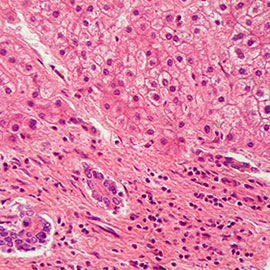


iPSCs provide a more practical alternative to creating ESC-like cells in species where recovery of embryos or in vitro fertilization is difficult or not possible. In vivo protocols may include minimally invasive uterine flushing, often seen in mares. Disposed reproductive material has been the primary source of oocytes in domestic species obtained from meat processing in livestock or ovariohysterectomies in companion animals. Oocyte collection for in vitro embryo production is an invasive procedure that has prompted ethical considerations. However, technical difficulties have interfered with the isolation and use of ESCs, namely in ungulate species and canines. ESCs can be obtained from in vivo and in vitro produced embryos at the blastocyst stage. ESCs offer a similar versatility to iPSCs as they are both pluripotent, but not without limitations. The versatility of iPSCs may make them preferential over MSCs that are limited in their differentiation potential due to their multipotent nature. In the context of this review, the term mesenchymal stromal cells has been adopted over mesenchymal stem cells due to the finite self-renewing property of MSCs that does not support the traditionally recognized self-renewing characteristic of stem cells. iPSCs possess several benefits over other stem cell types such as mesenchymal stromal cells (MSCs) and embryonic stem cells (ESCs). iPSCs have since been of interest to researchers in the fields of toxicology, pathology, virology, developmental anatomy and physiology, amongst others. Takahashi and Yamanaka first discovered somatic cells’ capacity for reprogramming in 2006 after forcing differentiated fibroblast cells to ectopically express four transcription factors associated with pluripotency: Oct4, Sox2, Klf4, and c-Myc, collectively referred to as OSKM. Induced pluripotent stem cells (iPSCs) are laboratory-developed pluripotent stem cells generated by the reprogramming of differentiated cells. This review will analyze the literature pertaining to iPSCs derived from various domestic species with a focus on iPSC production and characterization, applications for tissue and disease research, and applications for disease treatment. Safety, cost, and feasibility are potential barriers for this technology that must be considered before widespread clinical adoption. This research is valuable both for veterinary medicine as well as for the prospect of translation to human medicine. Protocols for their production have been developed for many domestic animal species, which have since been used to further our knowledge in the progression and treatment of diseases. These cells have great potential in research as they are self-renewing and pluripotent with minimal ethical concerns. iPSCs are a relatively new and rapidly developing technology in many fields of biology, including developmental anatomy and physiology, pathology, and toxicology. Induced pluripotent stem cells (iPSCs) are undifferentiated stem cells characterized by the ability to differentiate into any cell type in the body. The Creative Commons Public Domain Dedication waiver ( ) applies to the data made available in this article, unless otherwise stated in a credit line to the data. If material is not included in the article's Creative Commons licence and your intended use is not permitted by statutory regulation or exceeds the permitted use, you will need to obtain permission directly from the copyright holder.

The images or other third party material in this article are included in the article's Creative Commons licence, unless indicated otherwise in a credit line to the material.

Open AccessThis article is licensed under a Creative Commons Attribution 4.0 International License, which permits use, sharing, adaptation, distribution and reproduction in any medium or format, as long as you give appropriate credit to the original author(s) and the source, provide a link to the Creative Commons licence, and indicate if changes were made.


 0 kommentar(er)
0 kommentar(er)
